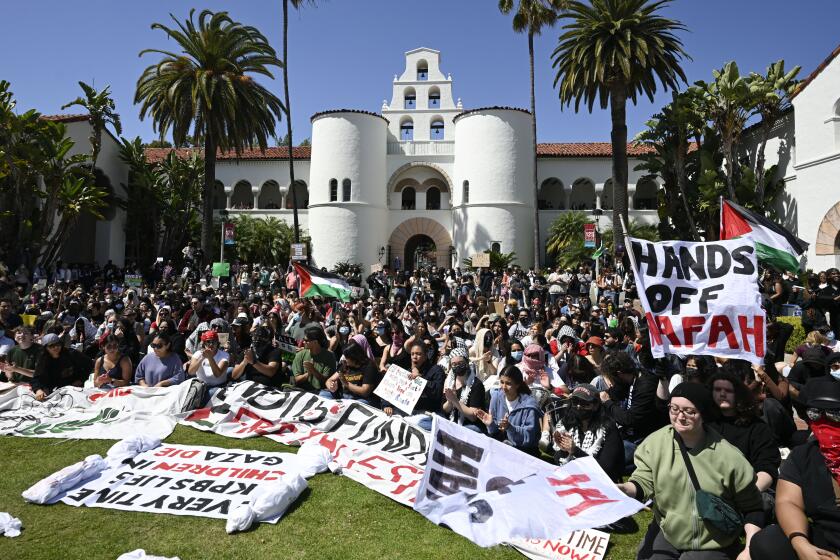The legacy of the Salk

Practically vanquishing polio — the scourge of the 20th century — wasn’t enough for Jonas Salk.
He yearned to battle other diseases, especially those affecting children.
So the renowned virologist from New York looked west, to a mesa in San Diego County. Would it be possible, Salk wondered, to create a center on that bluff so scientists from many fields could explore their interests with few distractions?
The answer proved to be yes. The Salk Institute in La Jolla is celebrating its 50th anniversary, and it’s doing so as a jewel of biological science research.
Five scientists connected with Salk have gone on to win the Nobel Prize. They include Francis Crick, who shared the 1962 Nobel Prize for discovering the structure of DNA.
Sixteen of Salk’s faculty members have been elected to the National Academy of Sciences, the honorific society created during the Lincoln administration to advise Congress and the president on science and technology.
Today the institute has 60 lead scientists, and its annual operating budget exceeds $100 million.
“The Salk was based on work by Jonas Salk that really changed the world, and they have continued the tradition of very high-impact, world-class research since then,” said Drew Senyei, managing director of Enterprise Partners Venture Capital, a firm that focuses on Southern California.
“They represent world-class science for San Diego and for the world,” he added.
Here is a look at five Salk researchers who have made important contributions to science:
FRED H. GAGE
In 1998, the neuroscientist overturned a long-held belief by proving that human bodies can produce new brain cells throughout life, particularly in the hippocampus, which distributes memory to appropriate areas of the brain.
Gage and his team are studying how these new cells might be used in a positive way, such as for replacing brain or spinal-cord cells damaged by injury or neurodegenerative disease. The work involves finding ways to turn newborn cells into mature ones.
INDER VERMA
The geneticist has made significant discoveries about using modified viruses for gene therapy.
Verma and his team developed a stripped-down version of HIV, the virus that causes AIDS, so it could deliver genes into non-dividing cells, which are the majority of cells in the body. Until then, scientists had found success only with cells that could divide.
During clinical trials in 2009, the modified virus was used to stop adrenoleukodystrophy, a potentially lethal genetic brain disorder, in two boys in Spain. The rare disease is the topic of the 1992 film “Lorenzo’s Oil.”
RENATO DULBECCO
In the early 1970s, Dulbecco unmasked the genetic nature of cancer. His studies explained how a cancer virus inserts its own DNA into a cell’s DNA and causes tumor growth.
For that discovery, Dulbecco and his collaborators shared the 1975 Nobel Prize in physiology or medicine.
Dulbecco also suggested in a 1986 article in the journal Science that a map of the human genome was needed to fully understand cancer. Four years later, researchers started the Human Genome Project.
At 96, Dulbecco is still working. He is collaborating on studies dealing with genes involved in breast cancer.
FRANCIS CRICK
Crick’s career didn’t end after he shared the Nobel Prize for revealing the structure of DNA.
He joined Salk as a nonresident fellow in 1960 and helped develop theories about how to better understand the mechanisms behind consciousness and attention. Crick played a key role in launching studies in neuroscience and computational neurobiology at the Salk.
ROGER GUILLEMIN
The “father of neuroendocrinology’’ was the first to isolate somatostatin, a brain hormone that combats several types of tumors, notably tumors on the pituitary gland.
Guillemin shared the 1977 Nobel Prize in physiology or medicine for this achievement. He also was one of the first scientists to isolate the body’s natural painkillers — endorphins.
His discovery of other brain hormones has improved treatments for a variety of conditions, including thyroid disease, infertility and prostate tumors.






